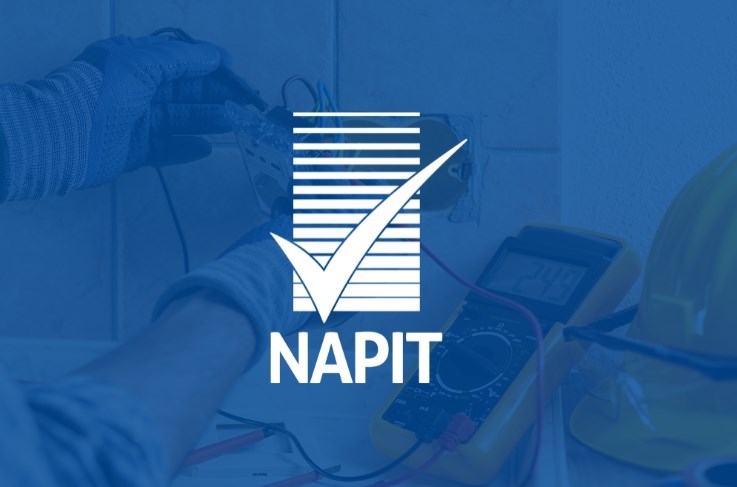
EAS Update - Effective 1st October 2026

Upcoming Changes to the Electrotechnical Assessment Specification (EAS)
The EAS has been updated to strengthen safety, competence and consistency across the electrical industry. These changes follow industry-wide collaboration to raise professional standards and support growing demand for low-carbon technologies.
The revised specification introduces clearer competence requirements for those carrying out inspection and testing work, as well as new qualification standards for electrical vehicle charging, solar PV and battery storage installations.
All certified businesses and individuals working in electrotechnical roles will need to understand these changes, review their current qualifications and ensure compliance ahead of the 1st October implementation date.
What is the Electrotechnical Assessment Specification (EAS)?
The EAS is an industry-agreed framework that sets minimum requirements for competence, qualifications and assessment for businesses carrying out electrical installations within the UK.
It is used by all certification and registration bodies to ensure that electrical work is completed safely, consistently and to recognised technical standards.
The EAS was developed through collaboration between organisations across the electrotechnical sector, government and consumer safety bodies. It's purpose is to protect consumers, raise professional standards and promote confidence in the electrical industry.
Purpose of the Update
The EAS changes are part of ongoing reforms to strengthen competence and standards across the electrical industry. Following the Grenfell Tower Inquiry and subsequent reviews, the updates were introduced to:
- Improve safety and accountability within electrotechnical work
- Provide clearer, measurable competence standards
- Support the transition to low-carbon technologies
Key Changes
1. Strengthened Competence Requirements
From October 1st 2026, all employed persons and Qualified supervisors (QSs) carrying out period inspection and testing must demonstrate:
- A minimum of two years' practical experience in periodic inspection and testing
- An approved Level 3 qualification, such as Periodic Inspection and Testing of Electrical Installations (2391-51), the Initial and Periodic Inspection and Testing (2391-52), or an equivalent qualification
- Evidence of ongoing Continuing Professional Development (CPD)
These requirements aim to ensure consistent and verifiable competence standards across the industry. Trainees and apprentices can continue to gain experience under appropriate supervision.
2. Introduction of Low Carbon Work Categories
The EAS now includes four new categories of low-carbon electrical work. Anyone under taking or supervising this work must hold suitable qualifications and maintain up-to-date CPD records. These include:
- Electric Vehicle (EV) Charging Installations
- Solar Photovoltaic (PV) Installations
- Electrical Energy Storage Systems EESS
- Micro Wind Turbines
Changes to Periodic Inspection and Testing
The updated EAS introduces clearer and more robust competence requirements for anyone carrying out periodic inspection and testing of electrical installations. These changes are designed to ensure that all individuals undertaking this work have the necessary skills, knowledge and experience to do so safely and effectively.
From October 1st 2026, all employed persons and Qualified Supervisors (QSs) responsible for periodic inspection and testing must be able to demonstrate:
- At least two years' practical experience specifically related to periodic inspection and testing work
- A recognised Level 3 qualification, such as: Periodic Inspection and Testing of Electrical Installations (2391-51), Initial and Periodic Inspection and Testing (2391-52), or another equivalent, approved qualification
- Evidence of continuing professional development (CPD) to show ongoing competence and up-to-date technical knowledge
These strengthened requirements are intended to create consistency across the industry, reduce competence gaps and improve overall electrical safety.
To support progression, trainees and apprentices may continue to gain experience in inspection and testing, provided that they are appropriately supervised by a competent individual until they achieve the required qualification and experience.
If your business does not yet fully meet the new standard, this will be noted during routine assessments, starting from October 2025. However, businesses will have until October 2026 to fully align with the new competence requirements.
Qualification Requirements
The qualifications required to meet Mandatory Technical Competence (MTC) criteria for each work category are detailed in the list here. Outlined here are the approved qualifications currently offered by NAPIT to help you and your team meet these requirements.
Work Category | Required Qualification | Key Technical Reference Documents | Test Instruments |
Electric Vehicle (EV) Charging Installations | Level 3 qualification in the Installation of Electric Vehicle Charging Equipment | IET Code of Practice for EV Charging Equipment Installation | Earth Electrode; Earth Voltage Rise (Fuel Filling Stations) |
Solar Photovoltaic (PV) Installations | Level 3 qualifications in Small-Scale Solar PV Systems | IET Code of Practice for Grid Connected Solar PV Systems; MCS MIS 3002 | Earth Electrode, Solar Irradiance; AC/DC Clamp Meter |
Electrical Energy Storage Systems (EESS) | Level 3 qualification in Design, Installation and Commissioning of EESS | IET Code of Practice for Electrical Energy Storage Systems; MCS MIS 3012 | Earth Electrode, AC/DC Clamp Meter |





